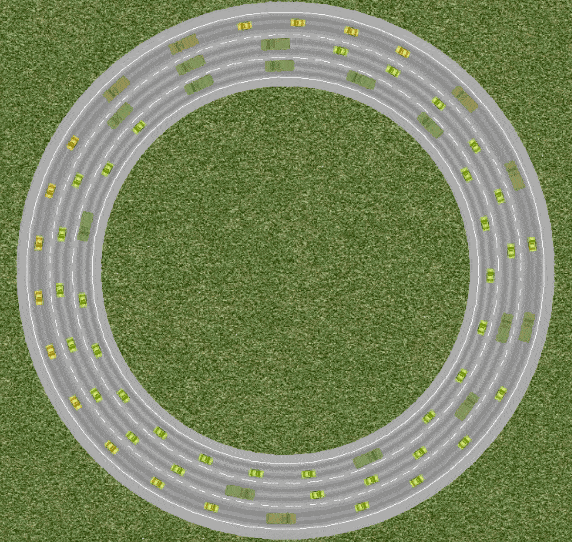Traffic jams are a universally miserable experience, no matter when or when they happen. There are numerous factors that can cause one to happen. Sometimes, when the cause is clear, say construction works or a car crash that needs to be cleared away, most of us can keep our frustration in check. But when you’ve been spending the last half hour inching your way to an intersection and then passing through without seeing any apparent reason for the slowdown, it’s much, much worse. The pointlessness of it all is enough to bring you to your boiling point.

But there’s always a cause behind the jam, even if not readily apparent. Computer models like Traffic-Simulation are designed to figure out how each traffic component adds towards this infuriating result. The simulation models various conditions such as the number of trucks or cars on the road, average distance and speed of cars, lane geometry and so forth, to explain how traffic jams develop. The idea is to use the simulations to figure out what might happen if traffic patterns shift, and predict problem areas before they happen.
The website was created by Dresden University of Technology Professor Martin Treiber, and can currently model a single scenario, but more features are planned for the future. The ring road was implemented first to illustrate ‘shockwave’ slowdowns — traffic jams that progress through a line of traffic from the first row of cars, as described in this video from the University of Nagoya, Japan:
So even in perfect conditions, with everyone driving at the same speeds, it’s still really hard for everything to run smoothly (except if you’re an ant). Even something as innocuous as adjusting the number of trucks on the road can cause unbelievable congestion in the simulation. So give it a go, try toying around with the variables to find what it takes to make traffic flow merrily along or create the mother of all traffic congestions.
And next time you’re stuck in traffic you’ll have a much better understanding of exactly “why. aren’t. we. moving. forward?!” Not sure that’s going to make the experience any more pleasant, though.






